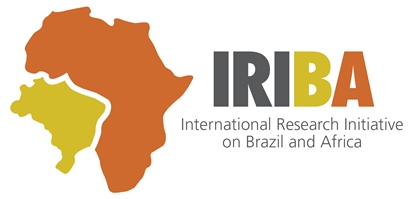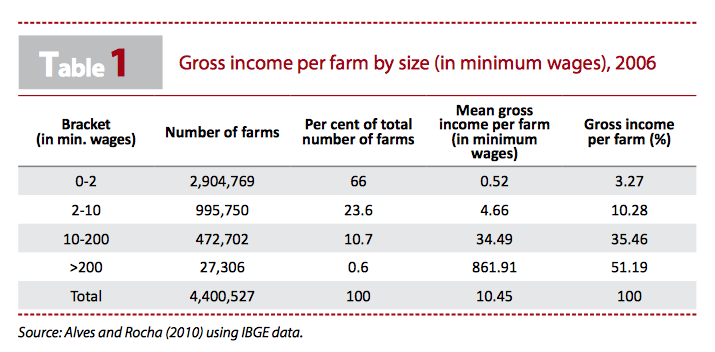This overview is based on the journal article ‘The political economy of the Brazilian model of agricultural development: Institutions versus sectoral policy’, by Bernardo Mueller and Charles Mueller.
The transformation in Brazilian agriculture
The position of Brazilian agriculture as one of the breadbaskets of the world is quite remarkable given that just two decades ago this sector was characterised instead by inefficiency. Although the details of how this transformation took place are specific to Brazil, the experience holds lessons for other developing countries seeking to make a similar transition. Today Brazil is one of the major producers of a series of agricultural commodities, such as soybeans, sugar, orange juice, maize, cotton, chicken, meat and pigs, with strong participation in a long list of others. This has been achieved not by simply incorporating more land but, rather, through dramatic improvements in productivity led by technological research that has successfully developed methods and inputs specifically suited to the conditions of the country (see Figure 1). While the total area of arable land has remained basically the same since the mid-1970s, production has increased by nearly 300 per cent—a rate even faster than other high achievers in this field, including the USA and China, and dramatically higher than the average for Latin America or Africa (see Figure 2).
Figure 1
The success of Brazilian agriculture in increasing production and productivity in a relatively short period of time has attracted significant attention as to what policies and programmes have been driving this transformation. Interest has centred on the fact that this transformation was achieved starting from a relatively under-developed agricultural setting, similar to that found in many other poor and developing countries. While many technological and organisational packages from developed countries have been adopted and implemented throughout the world, the results have often been disappointing. The Brazilian experience raises the possibility that South–South cooperation in agriculture could fare better, given the similarities involved and a purported lack of colonial vestiges.
Figure 2
The fact that the changes in Brazilian agriculture were achieved simultaneously, though not necessarily causally, with a significant and unprecedented decrease in poverty and inequality since 1995 has added to the allure of a Brazilian model, making it even more enticing for poor countries. In particular, a growing consensus has emerged that the Brazilian model would be particularly well suited for countries in Africa.
The perils of planning, managing and controlling agriculture
How has Brazilian agriculture transitioned from low productivity to its current status as a major player in international markets and a role model for other developing countries? A temptation is to look back and, with the benefit of hindsight, fit an ex-post explanation to what has taken place. Such an approach tends to overestimate the influence and effectiveness of policymaking as well as the rationality of agents and agencies. Instead, it is important to factor in the imperfect foresight and bounded rationality among policymakers and the limited influence of policy in that period.
Admitting that we have not yet arrived at a full understanding of the factors behind the Brazilian rise in agricultural productivity does not mean that its lessons cannot be useful for countries such as those in Africa. On the contrary, acknowledging gaps and uncertainties surrounding our assessment of Brazil’s experience might prevent rash transplantations of policies that might not have the intended effect in different circumstances. Examining the Brazilian agricultural experience through this lens will help to identify which elements can be usefully emulated.
A striking example is the extreme concentration of agricultural output in a small number of productive units. Table 1 shows that under 1 per cent of the farms in Brazil produce over half of the gross income in agriculture, while nearly 3 million farms (66 per cent of the total) generate just 3.27 per cent of the gross income. This has happened despite a massive effort by the government at land reform over the years.
The land reform programme in Brazil has redistributed to landless peasants an area equal to that of France, Portugal, Austria and Ireland combined, benefitting over 1 million families. The fact that such a gargantuan amount of effort and resources have been expended in land reform programmes over the years—with their additional associated cost in terms of environmental degradation (as many settlement projects are in the Amazon), violence and human suffering—to have such little impact on the distribution of output underlines the challenges facing policymaking in this area.
Three stages of agricultural transformation
The evolution of Brazilian agriculture can be divided into three distinct periods. The first was a phase of horizontal expansion, from the end of World War II to the beginning of the 1970s, in which the growth of agricultural production was mainly due to the expansion of the agricultural frontier.
This was followed by a phase of conservative modernisation, from the early 1970s to the early 1990s, in which the exhaustion of fertile lands in the country’s frontier regions led to the implementation of a system for technical innovation and the configuration of active policies of agricultural credit and price support, which led to massive distortions and inefficiencies in the sector.
The final phase was one of low governmental intervention, aside from credit provision which began in the early 1990s, characterised by increasing the participation of a substantially modernised and diversified agricultural sector in agribusiness complexes with an increasingly important role in supplying domestic and international markets.
Getting institutions right to get agricultural policy right
The key to understanding the erratic performance of Brazilian agricultural policy over time, as well as its eventual success in fostering productivity and growth, is the underlying institutional setting which determined which actors were in power in each period, what instruments they had access to and what their interests and motivations were.
During much of the early periods, agricultural policy which sought to enhance the modernisation and efficiency of the sector became side-lined and derailed by concerns over inflation or industrialisation. Rather than being seen as unfortunate policy mistakes, these choices should be understood as direct consequences of the country’s extant economic and political institutions.
The remarkable transformation in Brazilian agriculture only really emerged when inclusive institutions—strong presidentialism subject to a robust system of checks and balances—created a fiscal, monetary and political environment in which those policies could succeed. Any country seeking to learn from Brazil’s agricultural successes will do well to also consider its institutional transformation.
References
Desafios, Perspectivas, edited by J.G. Gasques and Z. Navarro, 275–290. Brasília: Ipea.
Economist. 2010. ‘Brazilian Agriculture: The Miracle of the Cerrado‘. The Economist, 26 August 2010. Accessed 10 November 2015.
Gasques, J., E.T. Bastos, C. Valdes, and M. Bacchi. 2012. ‘Total Factor Productivity in Brazilian Agriculture.’ In Productivity Growth in Agriculture: An International Perspective, edited by K. Fuglie, S.L. Wang, and E. Ball. Washington, DC: US Department of Agriculture.
Martha Jr, G., E. Contini and E. Alves. 2012. ‘Embrapa: its origins and changes.’ In The Regional Impact of National Policies – the Case of Brazil, edited by Werner Baer. Cheltenham: Edward Edgar Publishing.
Mueller, C.C. 2011. ‘Inflation and Income Transfers During the Golden Phase of Import Substitution Industrialization of the 1950s:
the Contribution of an Expanding Agricultural Frontier.’ In The Brazilian Economy in Historical Perspective, edited by Sonia Ranincheski, Camilo Negri, and Charles Mueller. Brasília: Verbena.
Mueller, C.C. 2012. ‘Regional Development and Agricultural Expansion in Brazil’s Legal Amazon: the Case of Mato Grosso.’ In The Regional Impact of National Policies – the Case of Brazil, edited by Werner Baer. Cheltenham: Edward Edgar Publishing.
USDA. 2013. ‘Economic Research Service: International Agricultural Productivity‘. Accessed 10 November 2015.


